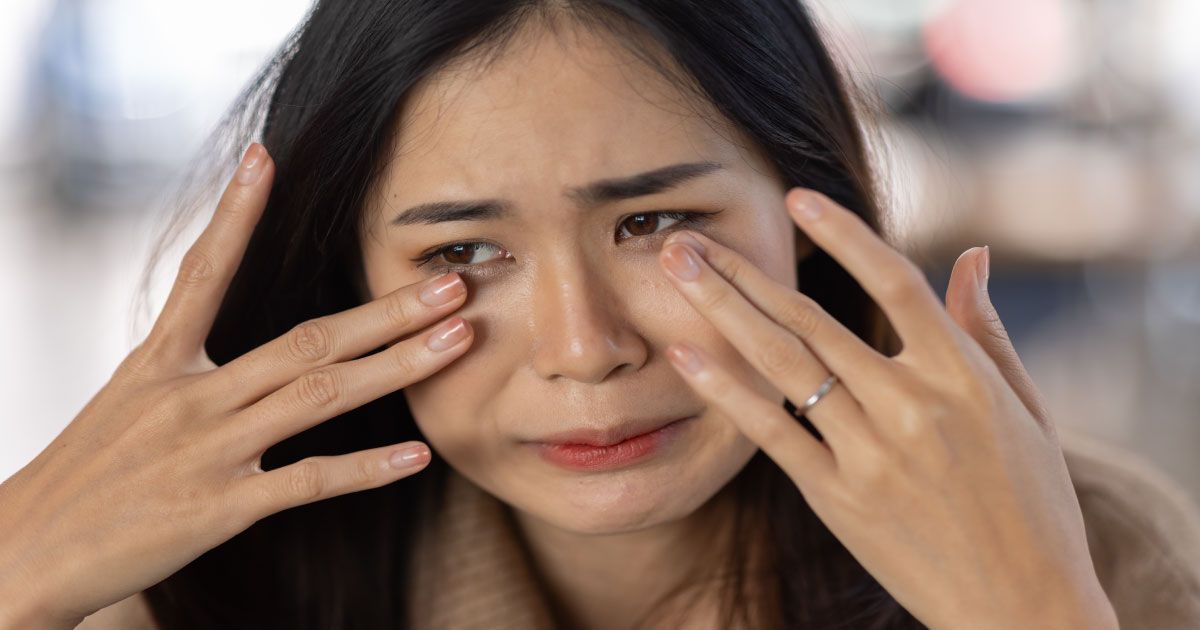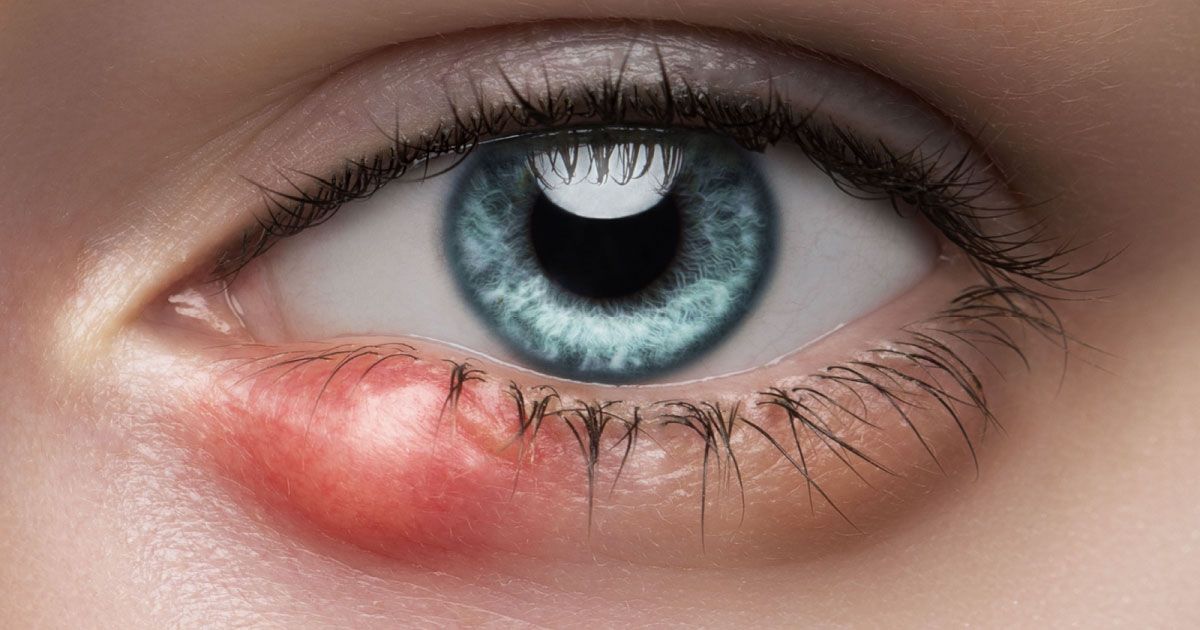Eye on Health: Key Symptoms of Common Eye Issues

Read Time: 5 minutes
Our eyes are intricate and delicate organs, requiring vigilant care to maintain optimal health. Everyday eye conditions can often manifest through common symptoms, some of which might seem minor but could indicate underlying issues that need attention. Early detection and effective management are crucial in preventing complications and maintaining eye health. This article delves into common symptoms associated with various eye conditions, their causes, and how to manage them.
Recognizing Key Symptoms of Eye Conditions
Understanding the symptoms of eye conditions can be instrumental in seeking timely care. Here’s a breakdown of some of the most common symptoms and the conditions they might indicate:
Redness
- Associated Conditions: Conjunctivitis (Pink Eye), Allergies, Dry Eye Syndrome
- Causes: Irritation, inflammation, exposure to irritants like smoke, prolonged screen time.
- Additional Signs: Alongside redness, individuals may experience dryness, itchiness, and a gritty sensation. These could point to conditions like dry eye syndrome or meibomian gland dysfunction.
Dryness
- Associated Conditions: Dry Eye Syndrome, Blepharitis, Meibomian Gland Dysfunction
- Causes: Insufficient tear production, environmental factors, hormonal changes.
- Additional Signs: Stinging, eye fatigue, and sensations of grittiness or having a foreign body in the eye.
Itching
- Associated Conditions: Allergic Reactions, Infections
- Causes: Allergens like pollen, pet dander, or dust mites; viral or bacterial infections.
- Additional Signs: Itching often comes with swelling, watery eyes, and sometimes redness.
Watery Eyes
- Associated Conditions: Environmental Irritants, Blocked Tear Ducts, Dry Eye Syndrome
- Cause: Overproduction of tears in response to irritation or obstruction in tear drainage.
- Additional Signs: This can also accompany blurred vision, itching, or redness.
Blurred Vision
- Associated Conditions: Refractive Errors, Cataracts, Glaucoma, Diabetic Retinopathy
- Causes: Issues with focusing light properly on the retina, underlying medical conditions.
- Additional Signs: Vision that worsens with blinking could indicate a need for corrective lenses, or signal more serious conditions requiring immediate attention.
Light Sensitivity (Photophobia)
- Associated Conditions: Migraines, Corneal Abrasions, Eye Infections
- Causes: Inflammation of the cornea or iris, eye strain.
- Additional Signs: Accompanying symptoms can include headaches, discomfort in bright light, and sometimes redness or tearing.
In-Depth Look: Dry Eye Syndrome
Dry Eye Syndrome, also known as keratoconjunctivitis sicca, is one of the most common yet underappreciated eye conditions. It occurs when the eyes do not produce enough tears, or the tears evaporate too quickly, leading to insufficient lubrication on the surface of the eye. This can result in discomfort and potential complications if left untreated.
Symptoms
- Stinging or burning sensations
- Redness
- A feeling of grittiness or having something in the eye
- Blurred vision, particularly after long periods of reading or screen time
Causes
- Environmental factors especially wind, smoke, dry air.
- Hormonal changes particularly during menopause or pregnancy.
- A decrease in tear production that comes with natural ageing.
- Reduced blinking during prolonged screen time significantly contributes to eye strain.
Management and Treatment
- Over-the-counter eye drops (artifical tears) can provide temporary relief.
- Incorporating regular breaks from screen time, following the 20-20-20 rule, and using humidifiers can help alleviate dry eyes and reduce eye strain.
- Medical treatments including prescription eye drops or, in severe cases, procedures like punctal plugs to help maintain tear film stability and improve eye comfort.
Recognizing and treating Dry Eye Syndrome early can prevent more severe issues like corneal damage or infections.
Conjunctivitis (Pink Eye): A Closer Look
Conjunctivitis, or pink eye, is an inflammation or infection of the conjunctiva, the transparent membrane that lines the eyelid and covers the white part of the eyeball. This condition is highly contagious and presents in several forms:
1. Viral Conjunctivitis is a common eye condition characterized by symptoms such as redness, watery discharge, and irritation, typically affecting both eyes. It is often associated with a cold or respiratory infection, as viruses that cause these illnesses can also infect the eyes. While the condition can be uncomfortable, it generally resolves on its own within one to two weeks without the need for specific medical treatment.
2. Bacterial Conjunctivitis is an eye infection that presents with severe redness and a yellow-green discharge, often causing the eyelids to stick together. It is caused by bacterial infections and requires treatment with antibiotic eye drops or ointments prescribed by a healthcare provider to resolve the condition effectively.
3. Allergic Conjunctivitis is an eye condition characterized by intense itching, tearing, and swollen eyelids. It is triggered by exposure to allergens such as pollen, dust, or pet dander. Treatment typically includes antihistamines, avoiding known triggers, and, in some cases, prescription medication to manage symptoms effectively.
Maintaining proper hygiene, such as regular handwashing and avoiding touching the eyes, can prevent the spread of conjunctivitis. Find out more about Conjunctivitis in our blog called Decoding Pink Eye.
Eye Strain and Digital Eye Fatigue: The Modern Challenge
In our technology-driven world, eye strain and digital eye fatigue have become common complaints. These conditions result from prolonged exposure to digital screens, leading to symptoms that can interfere with daily activities:
Symptoms
- Blurred vision
- Headaches
- Dry eyes
- Neck and shoulder pain
Causes
- Staring at screens without breaks during prolonged focus causes muscle fatigue around the eyes.
- Blue light exposure disrupts sleep patterns and can worsen eye strain.
- Poor ergonomics, such as improper screen positioning or lighting, increases strain on the eyes.
Management Tips
- The 20-20-20 rule advises taking a 20-second break every 20 minutes to look at something 20 feet away.
- Ergonomics involves positioning screens at eye level and adjusting lighting to reduce glare.
- Adjusting screen brightness to match ambient lighting helps minimize strain
These simple strategies can make a significant difference in reducing eye strain and maintaining comfort during prolonged screen use. For more tips, check out our blog on digital eye strain.
Allergic Reactions Affecting the Eyes
Ocular allergies, or allergic conjunctivitis, occur when the immune system reacts to allergens like pollen, dust mites, or pet dander. This can lead to inflammation and a range of symptoms that impact daily life.
Symptoms
- Itching, often leading to rubbing and potential irritation
- Redness and swelling, sometimes making it difficult to keep the eyes open
- Watery discharge, as the body attempts to flush out the allergens
Types
- Seasonal Allergic Conjunctivitis typically occurs during times of high pollen counts.
- Perennial Allergic Conjunctivitis persists year-round due to indoor allergens like dust mites.
Management
- When possible, avoid allergens to reduce exposure to known triggers.
- Over-the-counter treatments like antihistamine eye drops can help alleviate symptoms.
- Prescription Medications: For more severe cases, consult an eye care professional for stronger treatments.
Understanding the triggers of ocular allergies and how to manage them can significantly improve the quality of life for those affected. Learn more about eye allergies in this article from The American College of Allergy, Asthma & Immunology
Preventive Measures and Treatments
Proactively caring for your eyes is essential to prevent common conditions and maintain ocular health. Here are some strategies to incorporate into your routine:
1. Regular eye exams are essential for maintaining optimal eye health, much like routine visits to your dentist or primary care doctor. These checkups can detect early signs of eye conditions and vision issues, allowing for timely intervention before they become serious. Prioritizing regular eye exams is a proactive step toward preserving your vision.
2. Good hygiene practices are vital in protecting your eyes from infections and irritation. Washing your hands frequently and avoiding touching your eyes can prevent the transfer of germs. Contact lens wearers should follow proper cleaning and storage guidelines to reduce the risk of infections, ensuring lenses are safe and comfortable to use.
3. Managing screen time effectively is crucial for minimizing digital eye strain. The 20-20-20 rule—taking a 20-second break every 20 minutes to look at something 20 feet away—can significantly reduce fatigue. Additionally, adjusting screen brightness and positioning can help alleviate strain and improve comfort during prolonged screen use.
4. Proper nutrition is another key aspect of eye care. A diet rich in omega-3 fatty acids, vitamins C and E, zinc, and lutein can promote overall eye health. Incorporating foods like leafy greens, fish, nuts, and citrus fruits into your meals provides the nutrients your eyes need to stay healthy and function well.
5. Treatment options for eye issues provide different approaches based on the condition. For dry eyes, over-the-counter artificial tears can provide relief by keeping your eyes hydrated. Bacterial infections, such as conjunctivitis, may require antibiotics, so it is important to consult a healthcare provider to ensure the appropriate treatment is prescribed.
By understanding the importance of preventive measures and seeking timely treatment, you can effectively manage everyday eye conditions and maintain healthy vision throughout your life.
The Takeaway
Eye health is integral to our overall well-being, and recognizing the signs of common eye conditions is the first step in ensuring proper care. By staying informed about symptoms, causes, and treatments, and by incorporating preventive strategies into daily life, you can protect your eyes and enjoy clear, comfortable vision for years to come. If you experience persistent symptoms or discomfort, don't hesitate to consult with your Urban Optiks eyecare professional to get the personalized care you need.
The information provided in this article is intended for general knowledge and educational purposes only and should not be construed as medical advice. It is strongly recommended to consult with an eye care professional for personalized recommendations and guidance regarding your individual needs and eye health concerns.
All of Urban Optiks Optometry's blog posts and articles contain information carefully curated from openly sourced materials available in the public domain. We strive to ensure the accuracy and relevance of the information provided. For a comprehensive understanding of our practices and to read our full disclosure statement, please click here.
OUR LATEST POSTS
© Urban Optiks Optometry, Inc. 2009-2025
All Rights Reserved
Location
The Cairo Building
3788 Park Blvd, Suite 5
San Diego, CA 92103
Phone: 619.683.2020
Text: 619.683.2020
Fax: 619.683.2111
Email: info@uoosd.com
Hours
Monday: 9 am – 7 pm
Tuesday: 9 am – 6 pm
Wednesday: 9 am – 6 pm
Thursday: 9 am – 7 pm
Friday: 9 am – 6 pm
Saturday: 9 am – 5 pm
Sunday: Closed


















